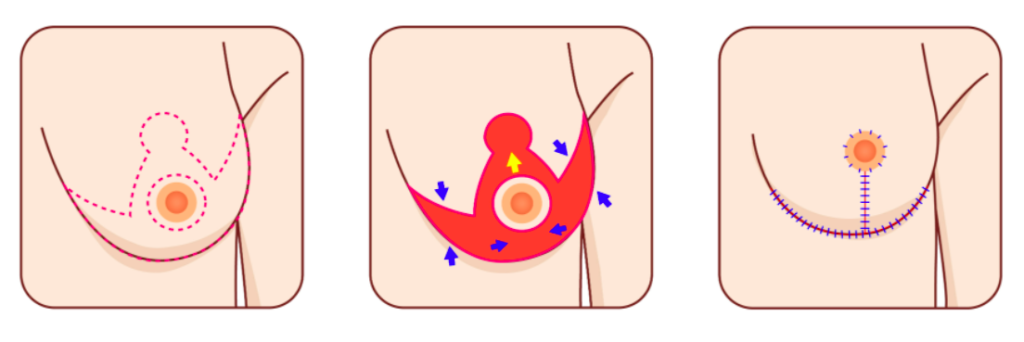how to get a breast reduction covered by insurance?
Research shows that a breast reduction reduces more than just one’s cup size. It also reduces neck, back, and shoulder pain; alleviates rashes beneath the breasts; reduces discomfort during exercise; and even decreases anxiety, depression, and body-image dissatisfaction. Despite the physical and psychological benefits of the procedure, insurance companies still consider it a cosmetic procedure until patients demonstrate it is medically necessary, a process one recent study called “cumbersome and potentially controversial.”
The same paper, published in Plastic and Reconstructive Surgery (PRS) in 2020, indicates that preauthorization denial rates for breast reduction surgery are on the rise-and have been increasing steadily for the past five years, for a variety of reasons, and particularly among private insurers. The authors note that insurance coverage criteria “are used arbitrarily, without scientific evidence, and are inconsistent with clinical practice” – which can make it difficult for patients to build their personal case when seeking approval for a procedure.
How do insurance companies determine if breast reductions are covered?
Your goal when applying for preauthorization for breast reduction is usually twofold. According to board-certified New York City plastic surgeon Dr. Umbareen Mahmood, you must first demonstrate that the procedure is “medically necessary and therefore reconstructive rather than cosmetic.” Dr. Amaka Nwubah, a board-certified plastic surgeon in Nashville, Tennessee, says insurance companies tend to define “medically necessary” as “impacting someone’s physical health in the form of back pain-upper-back pain is more likely to be related to breasts than lower-back pain-neck pain, and shoulder pain that significantly impact their quality of life and their ability to function.”
According to Dr. Mahmood, you may also need to demonstrate that “conservative medical management” has failed to improve your situation. Conservative treatments include physical therapy and chiropractic care for posture problems, dermatologic treatment for recurrent rashes due to rubbing and occluding of the breasts, and DIY remedies such as pain relievers and special bras.

Is Breast Reduction Surgery Right for You?
Most women undergo mammoplasty in order to resolve pain and achieve a more proportionate breast size, but there are several other factors involved as well.
- Nerve pain
- from ill-fitting bras and clothing
- that prevents you from participating in certain activities
- Irritation under the breast
- Back, neck, and shoulder pain
What is the safety of breast reduction surgery?
All surgical procedures are inherently risky, but mammoplasty is generally safe, with most complications resulting from an undesirable reaction to anesthesia, bleeding, and infection at the incision site. As a result, breast reduction surgery may not be right for all women who have large breasts. Young women under the age of 16, for example, should avoid undergoing the procedure as their breasts are not fully developed. The following factors may also prevent breast reduction surgery:
- Smoking
- Not wanting scars on your breasts
- Obesity
- Diabetes
Cardiovascular disease
Concerning safety, it is also worth mentioning that breast reduction surgery is not recommended for women who are trying to conceive because breastfeeding can be difficult after the procedure.
Losing weight will result in smaller breasts?
Women who are actively trying to lose weight should also postpone the procedure since losing weight can indirectly result in smaller breasts. Breasts are mainly composed of fat, and as fat cells expand, they become larger. Conversely, as fat cells shrink, they become smaller. With weight loss, you will notice an appreciable reduction in the size of your breasts, especially if you’re naturally inclined to store a lot of fat in the breast region.
As a result of losing weight, the breasts may become smaller to varying degrees. Women whose breasts contain less fat, for example, may experience a less noticeable reduction in breast size when they lose weight. The amount of fat tissue stored in the breasts, as well as their size as you gain or lose weight, is influenced by genetics. By scheduling a consultation with your prospective surgeon, you can determine how much smaller your breasts will become after losing weight. Most of the time, he or she will recommend that you lose weight prior to surgery and tell you how much smaller your breasts will become after losing weight.

Preparation for Surgery
Almost always, breast reduction surgery is performed under general anesthesia and in an outpatient facility or hospital. A surgeon will use one of two methods to remove excess fat and reduce the size of the patient’s breast, surgical incision or liposuction. Before removing fat, tissue, and skin, the surgeon will also make an incision around the areola, which is a pigmented ring surrounding the nipple, as well as down the length of each breast. This reduces the overall size of the breast. After the breasts are reshaped, the areola is repositioned on the newly resized breast. Last but not least, the areola is repositioned to correspond with the new size of the breasts.
Health insurance covers breast reconstruction?
In general, insurance will only pay for breast reconstruction surgeries if they are deemed medically necessary, however, there are always exceptions. Breast reduction surgery is usually considered a cosmetic procedure unless the patient is able to prove that they have an underlying health condition that can only be resolved by undergoing the corrective procedure. Breast reduction surgery is typically regarded as a cosmetic procedure, unless a patient can prove that they have an underlying health condition that can only be resolved by undergoing the procedure. In addition, patients must meet a predetermined insurance threshold before their surgery can be covered.
How to Get Your Breast Reconstruction Surgery Covered by Insurance?
Patients interested in having breast reconstruction surgery covered by their insurance will typically have to submit a letter of medical necessity, which states that the procedure is necessary to resolve their underlying health problem. In addition, most insurance providers require six to twelve months of documentation along with treatment by a physical therapist, chiropractor, dermatologist, or orthopedist to ensure that all other options have been explored before approving surgery.
It is best to request a letter stating what is required for approval from your insurance provider well in advance of breast reconstruction surgery to speed up the approval process. Insurance companies have different criteria for approval. After submitting the required documentation, the average turnaround time is three to six months.
The insurance provider can then confer with the treating physician and seek second opinions from other healthcare providers, such as chiropractors, to confirm that the surgery is medically necessary. You should inform your physician if you wish to have the procedure covered by insurance, so as to ensure that letters of medical necessity and other documents are sent to your insurance provider promptly.
ALSO READ
how much does a psychiatrist cost without insurance


